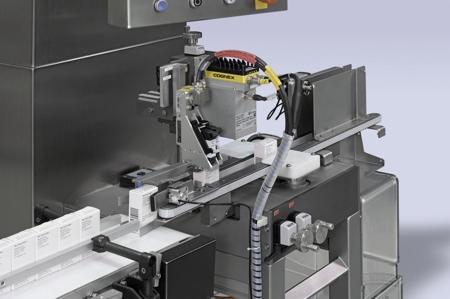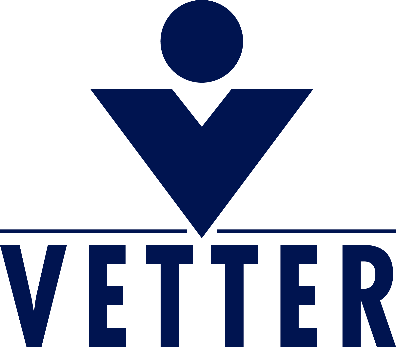The lack of a global agreement on one technology or unifying piece of legislation has made implementation of serialisation particularly hard for manufacturers. Many regions plan to set down requirements for serialisation, or have already done so, but so far the only consensus is that a unique identification code (UIC) is to be placed on unit level pharmaceutical products to enable customers to authenticate the code and, it is hoped, to rid a large part of the market of counterfeit products. But every market is moving to different timelines and has variations in practice.
For example, Turkey, China and Argentina have been among the quickest to call for drugs to be serialised; China, however, stipulates a linear code rather than the 2D-style code being adopted by the EU and US. Another country that will see the implementation of new guidelines in 2015 is Saudi Arabia, where drug packaging must be equipped with a data matrix code step by step, followed by serial numbers, in 2016. In Brazil, individual batches have to be serialised as of 2015 and South Korea’s phased schedule also started on 1 January this year.
Meanwhile in the US, the Food and Drug Administration (FDA) is looking to implement a standardised identification for all prescription drugs using a 2D data matrix code in a step-by-step approach until the end of 2023, and in the European Union, the Falsified Medicines Directive (EU FMD) requires packaging to carry a 2D data matrix code and a unique serial number for nearly all prescription drugs, starting from the first quarter of 2018.
In the US the eventual requirement will be to provide a complete chain of custody record or pedigree for each and every product in the healthcare supply chain
Discussing some basic variations, Glen Hodgson, Head of Healthcare at the standards body GS1, says: ‘In the US the eventual requirement will be to provide a complete chain of custody record or pedigree for each and every product in the healthcare supply chain. In Europe, we are currently adopting a point-of-entry/point-of-exit system that does not trace individual items through each stage of distribution through the supply chain – only at the point of packaging/production (entry) and the point of dispensing (exit). However, Europe is insisting that all the pieces are in place if it decides to move towards a US-style pedigree system at some point in the future.’
Many major multinationals with large resources and markets to protect already have systems in place. The biopharma division of Merck, EMD Serono, for example, has serialised at the unit level all of its major brands in the US in advance of requirements for serialising prescription drug products at the unit level there by 2017. It has also launched Check My Meds, a smartphone app that will put the power to verify medicines in the hands of patients.
But not all companies are so well placed. ‘The biggest challenge is for CMOs and small manufacturers,’ says Hodgson, adding: ‘Large multinationals are working on compliance to similar standards in other parts of the world, such as Turkey, both through pilots or full implementation. They will have learned lessons, built teams of managers and specialists, worked with and tested hardware and software solutions on offer, and will have developed specialist supplier relationships to ensure implementation and compliance to required standards.
The biggest challenge is for CMOs and small manufacturers; now they are playing catch-up with ‘big boys’ who will already have put together teams, tested solutions and made sure that the right software solutions are in place
‘Smaller manufacturers and CMOs in general, will not have undertaken this kind of work and will usually have been waiting until the regulations come into force. This can be seen as a sensible approach – apart from the fact that now they are playing catch-up with ‘big boys’ who will already have put together teams, tested solutions and made sure that the right software solutions are in place,’ Hodgson says.
Some contract service providers have implemented systems, but according to the CDMO, Vetter, because the requirements are country specific companies operating internationally need flexible solutions to meet these differing regulations. Vetter MD Thomas Otto says: ‘Our serialisation service allows for unique identification of the unit level and transportation packaging. Therefore we are providing a flexible response to the stricter demands of official agencies, while at the same time actively contributing to greater drug safety.
‘Our customers benefit from the fact that they can use the new service as a basis for their own track-and-trace programme. Transparency in distribution prevents counterfeits, but it also promotes greater efficiency for processes along the supply chain.’
Many mid-sized and smaller firms, however, are dragging their feet and have not yet put implementation programmes in place; but industry observers agree that these companies are in the minority. Ian Haynes, former AstraZeneca serialisation expert and partner in the specialist consulting firm, 3C Integrity, says: ‘There are many companies, particularly in some parts of Europe, which are still not moving forward fast enough, and others not at all, despite having all the means at their disposal to take action, get ready and prepare.’
Craig Stobie, Head of Global Life Sciences Team, Domino, believes compatibility and print quality and speed are the main concerns: ‘To comply, many manufacturers are looking to incorporate new equipment into their current systems. As a minimum, this new equipment must be compatible to ensure that downtime is minimised during installation and print quality and speed is optimised – potentially leading to benefits in overall equipment effectiveness (OEE) management.

Bosch says its serialisation concept offers customers more than just a machine
‘For generics and research-based manufacturers alike, when it comes to data handling, working with experienced suppliers who are already supporting hundreds of manufacturers with their compliance programmes across Europe will be of immense benefit,’ says Stobie. ‘Suppliers who run partner programmes and offer joint counsel to manufacturers give the advantage of ensuring machinery is integrated at all areas of the line and beyond, ensuring customers are ready to handle the vast data pool that is looming and that lines are working as flawlessly as can be.’
Equipment manufacturer Omron is seeing a clear trend of manufacturers moving from an investigation or early adoption stage to an implementation programme for conformance to the EU FMD. Dan Rossek, Omron’s Product Marketing Manager, views the top three barriers to companies implementing serialisation as time, investment and state of existing infrastructure. But the lack of unifying requirements is also an obstacle, he admits: ‘The common requirement is that pharmaceutical goods are identifiable down to product level, but the requirements from the various countries while not unique, certainly offer only limited parity. Variances in coding format are the common difference, but there are more extreme differences including using alternative technology for reading the serialised identifier, like RFID technology as opposed to human readable print or barcodes.’
With regard to the FMD, data handling probably represents the most significant challenge
The data handling issues arising from serialisations are also an unknown for many small companies, says Rossek: ‘With regard to the FMD, data handling probably represents the most significant challenge. The integrity and synchronisation of the data is the pillar of the FMD solution operating, as it is a fixed requirement to link, down to product level, from point of manufacture, through distribution and to point of dispensing. Any lapse in the integrity of the data will result in significant implications.’
Rossek adds: ‘The sense of urgency is now taking precedence; while some uncertainty still remains, most manufacturers are in a position to have partial availability of a ‘serialisation ready’ system at line level. The next stage, in many cases, is resolving the solution of creating and maintaining a data repository, synchronisation and integrity of the data to line level equipment.’
Many other equipment suppliers have been looking to integrate their equipment with IT solutions. Supplier of process and packaging equipment Bosch Packaging Technology has recently expanded its portfolio for the serialisation of pharmaceutical packaging. ‘With our serialisation concept, we offer customers more than just a machine,’ says Daniel Sanwald, Product Manager. ‘Bosch offers the complete package, which also includes the corresponding IT.’
Radio-frequency identification (RFID) and barcodes are expected to make track and trace easy and ubiquitous, but they are only as robust as the underlying software, claims one industry commentator. As long as track and trace is built upon a relational database it is limited in its ability to scale, and susceptible to hacking, believes Lawrence Fisher at Kezzler.
In a recent whitepaper, Fisher explored the issue of data management. ‘Look at the new law in Europe which requires that all pharmaceutical products have a unique code. That will come to about 17 billion codes per year, and when you extend that out three or four years, you’re looking at about 50–60 billion unique codes. Even the big SAP and Oracle systems aren’t capable of running those kinds of numbers,’ he says.
He believes Kezzler’s approach to track and trace is more secure and scalable as the code can be encrypted within RFID, barcodes or 2D barcodes, but because it never store codes in a database, it offers linear scalability, consistently reliable performance, and a response time that is independent of the amount or age of the data.
Kezzler’s proprietary algorithm can generate one billion codes in 46 seconds. The codes are delivered to the vendor in a ‘closed’ system, meaning that they remain encrypted and invisible until they are actually printed on a product. There is nothing to duplicate, copy or steal. The consumer can scan the code with a smartphone – or in countries where smartphones are still rare, key in the code through a text message – and verify the product’s authenticity.
India’s regulations for exported medicines will require manufacturers to maintain a database of the serialised products for a minimum of six months after the expiry of the product
Another consideration is how long the data needs to be held. India’s regulations for exported medicines will require manufacturers to maintain a database of the serialised products for a minimum of six months after the expiry of the product, for example.
Many companies see the data management answer in the Cloud. TraceLink, of Wakefield, MA, US, for example, has launched its Life Sciences Cloud platform and Product Track application for end-to-end DSCSA compliance. Described as a Transaction History Management System it is said to provide all the necessary network connectivity, operational use case and compliance data management tools to ensure end-to-end DSCSA compliance for large or small pharmaceutical companies.
Companies also need to look beyond item level serialisation into extending traceability schemes to secondary and tertiary packaging, says GS1’s Hodgson: ‘If it is not specifically required today it is very likely that it will be in the future DSCSA, and the EU FMD will require this too. But, if you trade with other European markets or the US from UK, you certainly will need to serialise at item, case and pallet level.’





